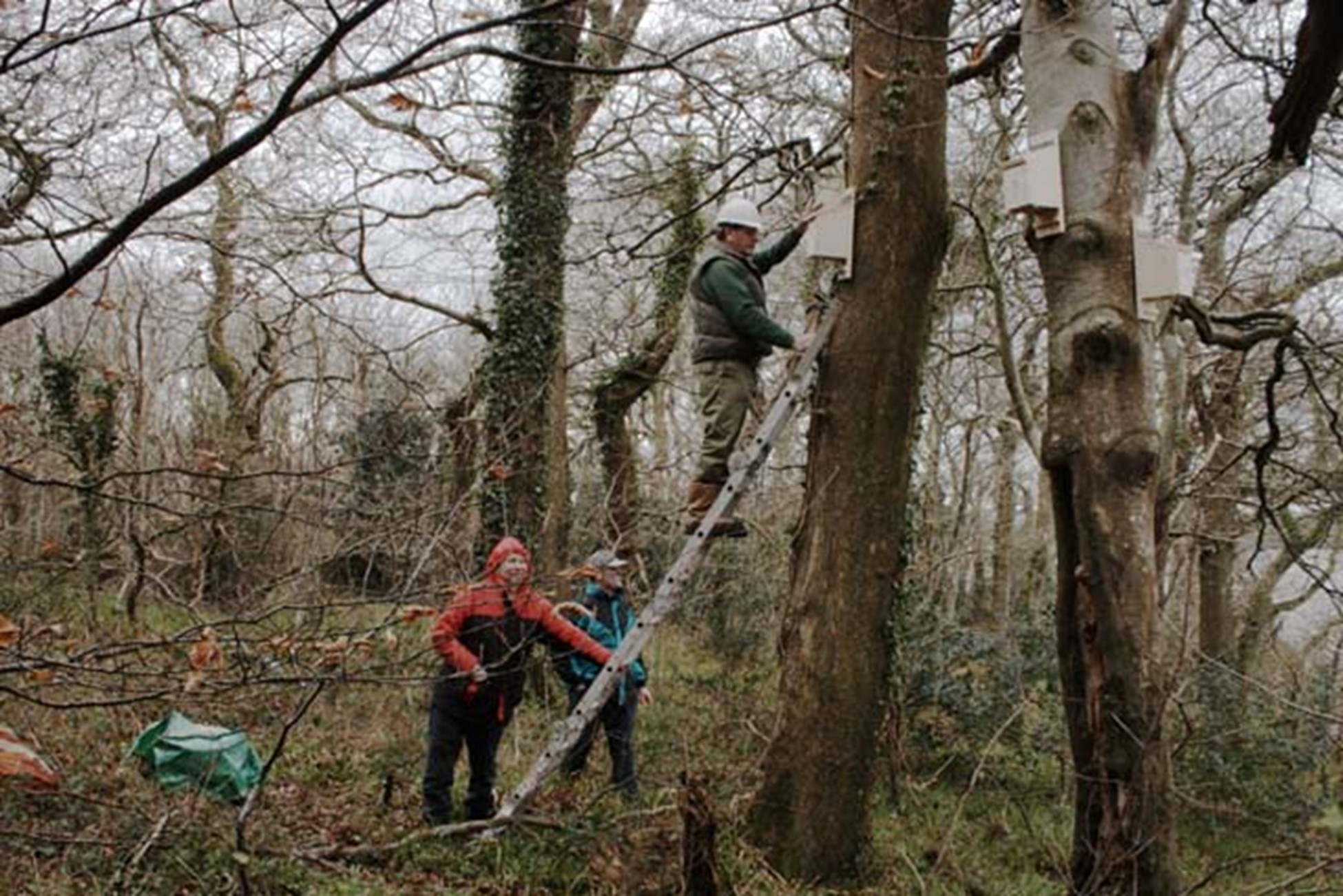The Beauty of Bats
Kelly Jackson, Christian County Horticulture Agent
Unfounded claims that bats get stuck in people’s hair, that all bats have rabies, and Hollywood’s influence (i.e., blood-sucking vampires) often put bats in a negative light. The truth is bats are truly important to the environment.
Bats are not birds; they are mammals, the only one that can fly. All bats in Kentucky are insectivorous, catching insects in flight or on plants. For example, one Little Brown Bat can catch 600 mosquitoes or more an hour making them a great natural form of insect control. Bats in other countries eat fruit, fish, small mammals, and yes, blood. There are 3 species of the fabled vampire bats, but all live in Latin America.
A common fear is that bats carry rabies. All mammals can get rabies, but unlike dogs or raccoons which may become enraged and attack, bats with rabies will become paralyzed and die quietly. For this reason you should never pick up a bat found lying on the ground. Use a shovel to move it to an inaccessible site to children or pets and call the county animal control office.

Warleigh Point Bat Boxes by David Brinicombe is licensed under CC-BY-SA 2.0
Bats typically live in caves, tree cavities, old buildings, or beneath bridges. But you can provide habitat for bats by purchasing or building a bat house and placing it on your property. You will likely attract Big Brown Bats and Little Brown Bats to your structure. Houses should be hung at least ten feet above the ground on the east side of a tree or building and away from prevailing winds. Houses hung on a building will get more use than those on a tree. Make sure there are no obstructions to the entry or exit of the bat house. A simple and inexpensive bat roost can be made by wrapping and nailing (use aluminum nails) an 18-inch wide strip of tar paper completely around a tree’s trunk. The strip should be tighter at the top and loose at the bottom, about 2 inches away from the tree. Be patient, it may take months or years for bats to find a new habitat. You can learn how to build a bat house by visiting the Bat Conservation International website at: http://www.batcon.org.
Occasionally, bats may seek residence in homes. Small groups of bats may be removed by hand. Wearing heavy leather gloves (not your bare hands) pick up the bat while it is resting. Never try to catch a bat in flight since you could injure the animal. If you don’t want to touch the bat, cover it with an empty coffee can and gently slip a piece of cardboard between the container and the surface where the bat is resting. After you have captured the bat, take it outdoors away from pets and children and place it on the side of a tree or wall to fly away. Avoiding bat problems is simpler than resolving them. To prevent bats from becoming established in a building use 1/4 inch hardware cloth or screen to cover all attic and soffit vents. Good ventilation will also discourage bats from roosting. Gaps in siding, spaces under warped fascia boards, spaces between the house and chimney, and loose flashing and molding should also be sealed to exclude bats. Bright lights strung through attics may also repel bats. If your house is already infested with bats there are specific steps of removal too detailed to mention in this article. Contact the extension office for more information.
Even though bats may become a problem when they get into homes or buildings, remember that they are beneficial to our environment. Besides feeding on insects, many bats pollinate night-blooming flowers and a few species in South America are instrumental in reseeding rainforests. In Kentucky, bats are a welcome control method of mosquitoes and other garden pests. Nevertheless, negative attitudes against bats have led to the disturbance of roosting caves and urban sprawl has destroyed many other natural habitats including forested areas to the point that more than half of American bat species are considered endangered. You can help change that by providing man-made habitats and learning more about the beauty of bats.

